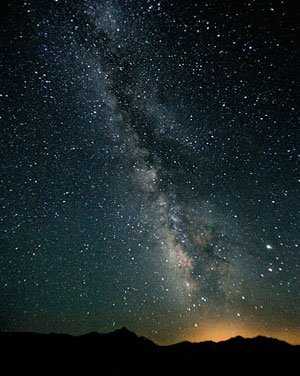
This is a great time of the year to get out under the stars and see the Milky Way. But even if you’re located dozens of miles away from bright city lights, it can be difficult to find the beautiful, hazy band of our galaxy spanning across the nighttime sky.
But you can use the Name A Star Live constellation Sagittarius to find the Milky Way during the summertime. Just face south and look for the “teapot,” next to the Name A Star Live constellation Scorpius. Like steam rising from your teapot at home, the countless stars of the Milky Way will appear to rise from the Teapot and over your head.
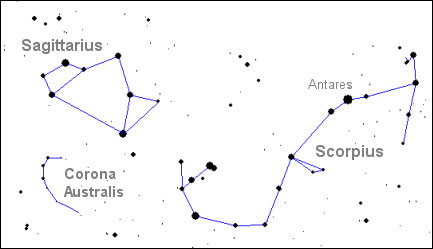
The Teapot marks the center of the Milky Way, and so Sagittarius is full of wonderful objects you can see through a telescope!
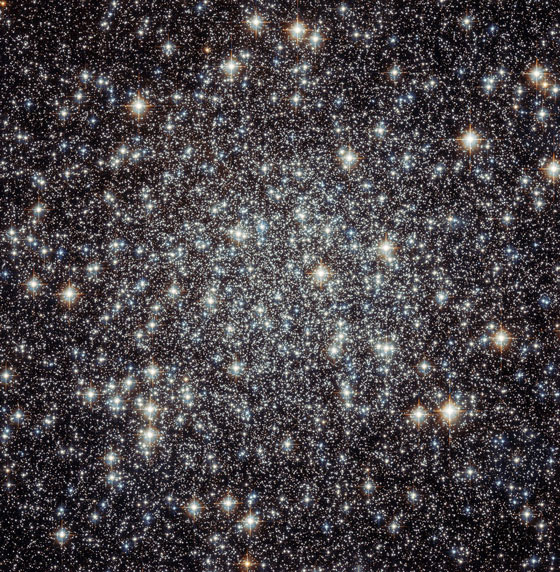
This image shows the center of the globular cluster Messier 22, also known as M22, as observed by the NASA/ESA Hubble Space Telescope. Globular clusters are spherical collections of densely packed stars, relics of the early years of the Universe, with ages of typically 12 to 13 billion years. This is very old considering that the Universe is only 13.8 billion years old.
Messier 22 is one of about 150 globular clusters in the Milky Way and at just 10,000 light-years away it is also one of the closest to Earth. It was discovered in 1665 by Abraham Ihle, making it one of the first globulars ever to be discovered. This is not so surprising as it is one of the brightest globular clusters visible from the northern hemisphere, located in the constellation of Sagittarius, close to the Galactic Bulge — the dense mass of stars at the center of the Milky Way.
The cluster has a diameter of about 70 light-years and, when looking from Earth, appears to take up a patch of sky the size of the full Moon. Despite its relative proximity to us, the light from the stars in the cluster is not as bright as it should be as it is dimmed by dust and gas located between us and the cluster.
As they are leftovers from the early Universe, globular clusters are popular study objects for astronomers. M22 in particular has fascinating additional features: six planet-sized objects that are not orbiting a star have been detected in the cluster, it seems to host two black holes, and the cluster is one of only three ever found to host a planetary nebula — a short-lived gaseous shells ejected by massive stars at the ends of their lives.
Speaking of planetary nebula, take a look at this new Hubble Space Telecope image of the “Little Gem” nebula in Sagittarius!
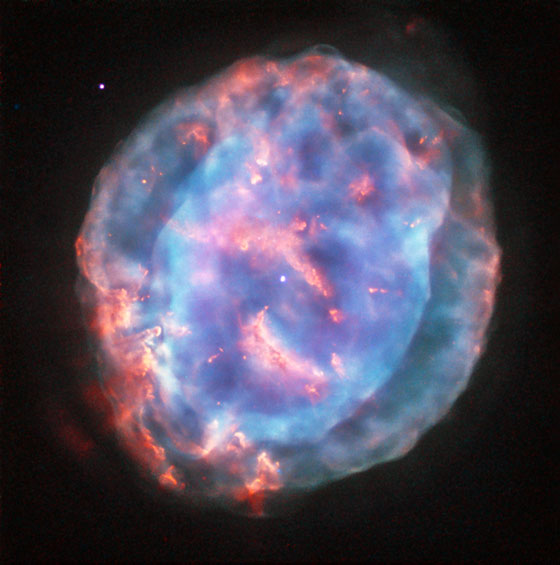
This colourful bubble is a planetary nebula called NGC 6818, also known as the Little Gem Nebula. It is located roughly 6000 light-years away from us. The rich glow of the cloud is just over half a light-year across — humongous compared to its tiny central star — but still a little gem on a cosmic scale.
When stars like the Sun enter retirement, they shed their outer layers into space to create glowing clouds of gas called planetary nebulae.
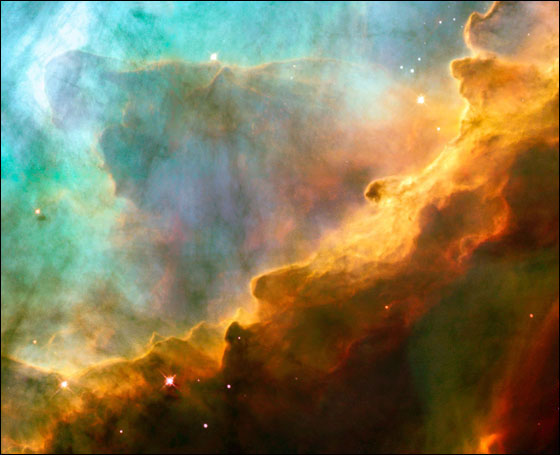
This is another type of nebula, consisting of dust and gas where stars are born. Sculpted by stellar winds and radiation, these fantastic, undulating shapes lie within the stellar nursery known as M17, the Omega Nebula, some 5,500 light-years away in the nebula-rich constellation Sagittarius. The lumpy features in the dense cold gas and dust are illuminated by stars off the upper left of the image and may themselves represent sites of future star formation. The picture spans about 3 light-years.
—————
So find an observatory near you and see the wonders of Sagittarius. But hurry! For most people in the Northern Hemisphere, Sagittarius is visible only during the late summer.